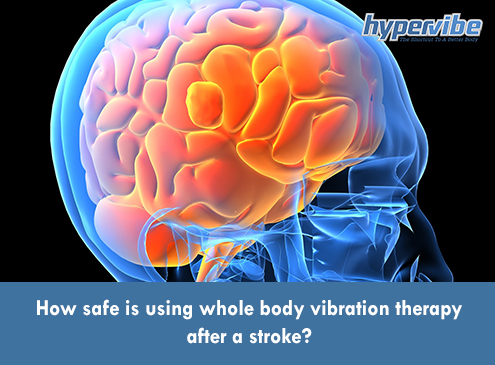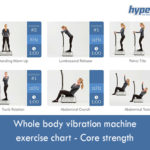
Someone who has just suffered a stroke may require several months or even years to recover fully, and in some cases, there are still consequences that can’t be undone.
The purpose of rehabilitation after a stroke is, therefore, to help one get back to normal life and live as independent as possible, but in most patients changes in lifestyle as well as in some social and physical aspects of life are required for improving the quality of life. At the same time, changes in lifestyle may be needed for preventing recurrent strokes, and for helping the patient regain independence.
Symptoms like anxiety, depression, fatigue and worry are normal for a stroke survivor, but the sooner rehabilitation starts, the better the chances for recovery. So whenever possible, the doctor will recommend starting the rehabilitation treatment in the first 24-48 hours post stroke; postponing is still possible if there’s any risk of complications or if the patient suffers from other conditions that make it risky to start the treatment right away.
Stroke is one of the leading causes of long-term adult disability and only around 10% of all survivors recover completely, 25% of them recovering with minor impairments. Early rehabilitation can improve the recovery and functions, but one may still experience the common consequences of stroke, such as weakness in one or both sides of the body, muscle stiffness and spasticity, muscle spasms that are painful, paralysis, coordination and balance issues, fatigue, numbness, pain and difficulties performing normal, day to day tasks.
Depending on the severity of symptoms, the treatment may include just physical activities such as therapy for relearning to walk, or also using an orthosis for stabilizing the body or a walking aid. The physical exercises will target specific muscles, and try to strengthen them and to improve the motor skills. If the fibers are very weak, electrical stimulation may be recommended for reeducating the muscles and improving the function of the affected limbs.
Also, for reducing spasticity and improving range of motion, stroke survivors may be recommended to perform range of motion exercises and flexibility exercises. These can be done the classical way, with no tools, or on a whole body vibration machine, which seems to be effective in strengthening the muscles and improving balance and posture after a stroke.
If you’re not familiar with whole body vibration, it may seem an unsafe solution after a stroke, as it works differently than conventional physical therapy, and some may think the vibration waves are not safe enough. However, there are several studies that support the use of WBV platforms in this category of patients.
First, let’s look at this study conducted by Korean researchers, that shows that vibration exercises can be incorporated in a rehabilitation program for stroke survivors. This form of therapy was found to be useful in improving the muscle tone and function of the upper body muscles. This study involved the participation of 14 chronic stroke survivors, who performed whole body vibration exercises in a sitting position, prior to occupational therapy.
Each whole body vibration session consisted of 10 minutes of vibration exercises, patients performing 5 sessions per week for a total of 8 weeks. The function of the upper extremity and muscle tone were measured, results indicating the exercising on a vibration machine prior to therapy can improve muscle tone and function in stroke patients.
The vibration exercises were done at a frequency of 10-40 Hz, on a lineal machine, in a sitting position. After the WBV session, the patients performed 20 minutes of occupational therapy. Scientists found that applying vibration therapy before the conventional rehabilitation program helped to improved trunk muscle stability and to decrease muscle stiffness.
Another study that found similar effects of whole body vibration therapy in stroke survivors was conducted by researchers from Hungary, who showed that a single session of vibration therapy may increase voluntary muscle strength after a stroke. Participants performed 6 bouts of 1 minute of WBV per session, at an amplitude of 5 mm and a frequency of 20 Hz. There were no side effects after the vibration therapy session.
Also, Chinese researchers found that 8 weeks of vibration training can increase ambulatory speed in stroke patients. The scientists investigated the effects of vibration exercises on gait performance and limb function in 30 stroke patients with knee hyperextension. Participants were randomized into a control or intervention group, the latter receiving whole body vibration therapy while the control group was treated with placebo.
Results showed that the knee hyperextension that was caused by stroke was significantly reduces and the walking function assessed by 10-meter test was significantly improved in the intervention (WBV) group, compared with the control group. No side effects were noticed.
Although there’s no standard protocol for WBV therapy in stroke survivors and no guarantee that vibration exercises will lead to the same results in all patients, these research papers are still encouraging.
However, it’s important to realize that stroke survivors recover differently and that the success of a rehabilitation program depends on the severity of the stroke. For these reasons, we recommend to discuss with your physician before adopting a WBV routine as part of a stroke rehabilitation program.
Have comments? Post them below or join our Facebook community and share your thoughts with us there.

Updated on: 08.09.2021 The lymphatic system is involved not only...

Stress can make you gain weight – we’ve heard this...

Various theories exist to answer this question. As you will...

Both rebounding and jumping on a trampoline are excellent ways...

Our series of whole body vibration machine exercise articles continues...